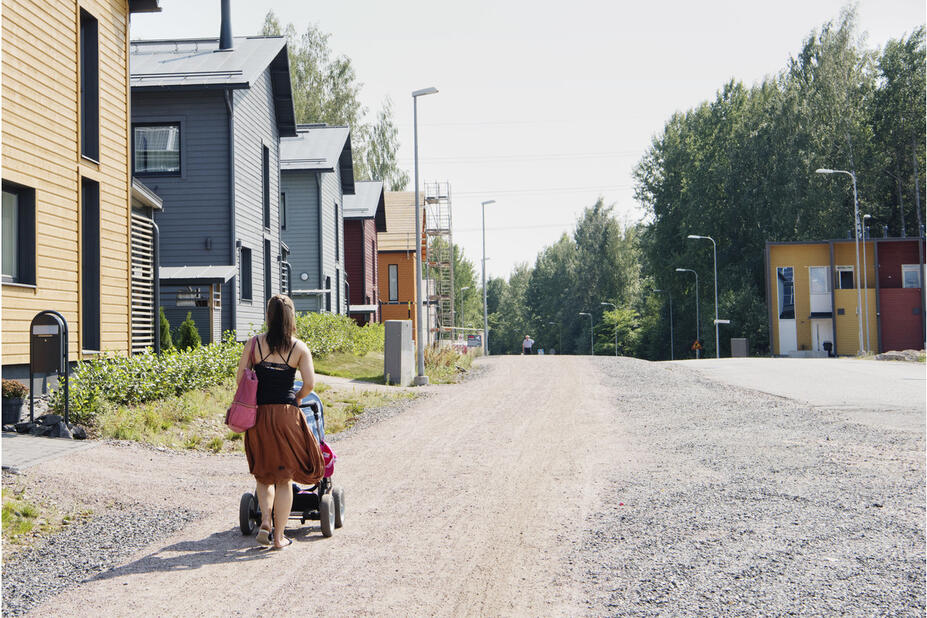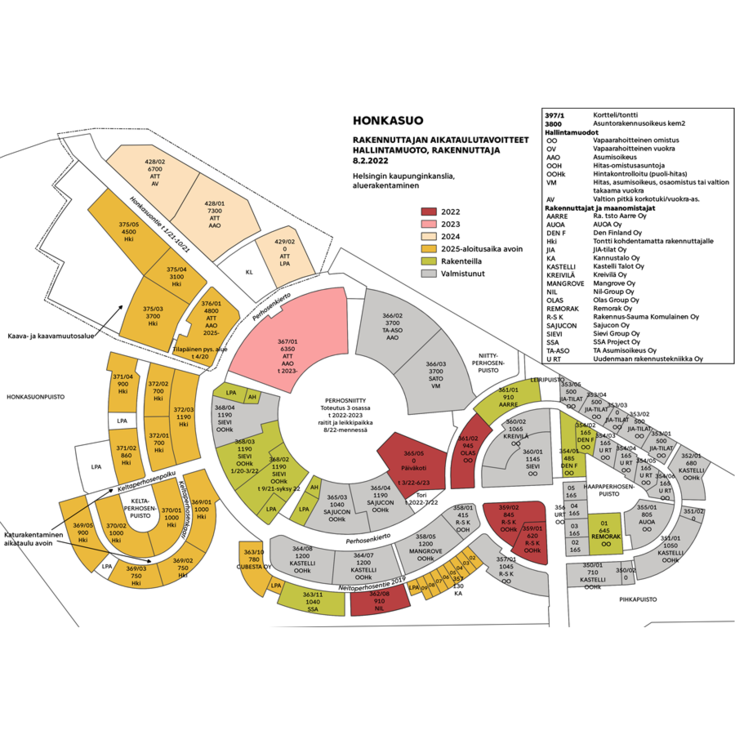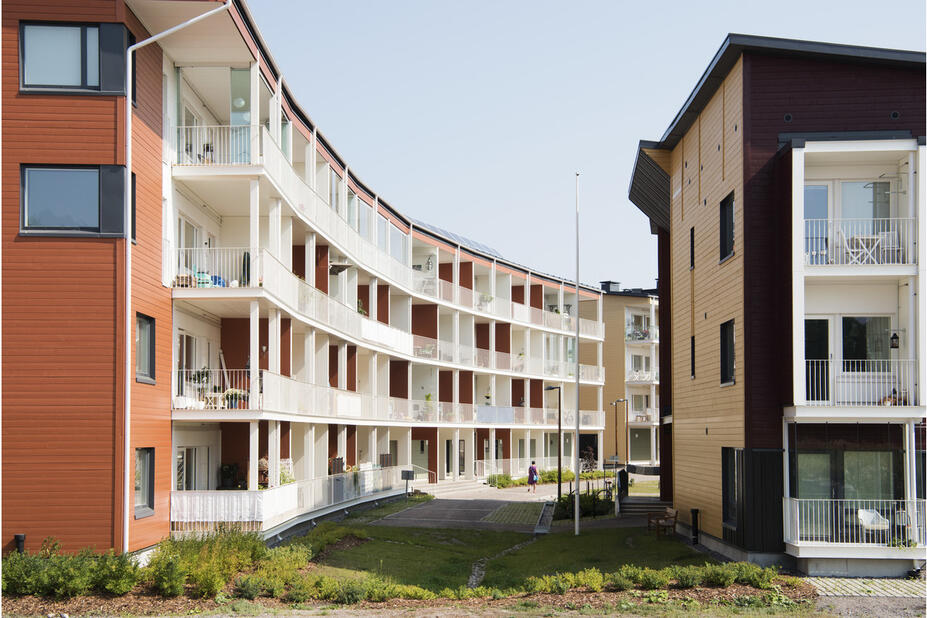Honkasuo
HonkasuoHonkasuo is Helsinki’s largest new wood construction area. The green urban village for 2,000 residents will be completed in the 2020s.
Find upcoming events at the Events.hel.fi website.
Find municipal decisions in the Decision-making section.
Honkasuo is Helsinki’s largest new wood construction area. The green urban village for 2,000 residents will be completed in the 2020s.

Honkasuo consists of detached houses, semi-detached homes and blocks of flats built around a central park. The first residents moved into the area in June 2016.
The wood-framed buildings are mainly two to five stories. The houses are colourfully painted, and adjacent buildings are different colours. The area offers owner-occupied flats and houses, rentals, and right-of-occupancy housing. The heart of Honkasuo is the Perhosniitty park with its urban farming plots.
A raised sphagnum-moss marsh sits west of the residential area, which the Finnish Environment Institute’s inventory has determined to be a locally important geological formation. The marsh was drained for peat extraction about 50 years ago, which is why it’s now forested. Pine, spruce, marsh Labrador tea and bog bilberries grow in the marsh.
The western edge of Honkasuo joins with the westernmost of Helsinki’s Green Fingers (green areas). Birds in the area include the corncrake, common grasshopper warbler, river warbler, marsh warbler, Blyth’s reed warbler, wood warbler, and Eurasian blackcap. The forest and marsh area have a large population of forest birds, including the icterine warbler, red crossbill, and the hazel grouse – rarely seen in Helsinki. The meadow area in Honkasuo is also an excellent butterfly meadow, according to resident sightings.

Honkasuo central park area, Perhosniitty, was the yard area of the old Honkasuo tenant farm. The house sat on top of a small hill, surrounded by a field cleared from the forest, a meadow and sheep barn. Some lilacs, an apple tree and other trees remain in the yard, but the only thing left of the buildings are remnants of the stone foundations. There are plans to develop the park for the existing cultural environment. Parts of the park are reserved for urban farming plots for the residents, and the open meadow area is intended for meadow plants that feed butterflies, in particular.
The city block park in east Honkasuo, Haapaperhosenpuisto, features an impressive knolly outcrop and the surrounding trees, primarily pine trees.
The marsh park in the western part, Honkasuonpuisto, could generate wider interest due to its unusual vegetation. Marsh Labrador tea, rhododendrons, cotton grasses and other rare plants occur naturally in marshlands.
Wetland ponds and other retention areas for rainwater run-off are being built in Pihkapuisto and Niittyperhosenpuisto parks.

The detailed local plans determine an area’s land use. For example, it shows where we can build housing, offices and parks, or where the roads and other pathways are.
This content is hosted by https://kartta.hel.fi. To see the content, switch over to the external site or modify your cookie settings to allow for preference and statistics cookies.
We started building Honkasuo in the eastern part of the zone in February 2013. Pre-construction work began in the area in spring 2013. Residential construction began in 2015.
The change to the detailed plan for Honkasuontie allows for building housing for 800 residents in the western part of Honkasuo. The new plan, which came into force in 2022, makes land use more efficient in Honkasuo.
Environmentally sustainable and climate-friendly construction is emphasised in Honkasuo. The ecological sustainability of construction projects and housing are considered in many ways throughout the entire life cycle of the buildings. The detailed plan includes provisions for low-energy construction and utilising renewable energy. All of the area’s residential buildings will be built from wood.


The Malminkartano railway station is within walking distance from Honkasuo, as is Myyrmäki. Trains on the Ring Rail Line provide access to Helsinki’s city centre and the airport in just over 15 minutes. Honkasuo is also easily accessible by bus.
The closest school, day-care centre and playground are within walking distance in Pihkapuisto. Honkasuo’s own day-care centre will be finished in 2023. There are also services near the Malminkartano railway station.
This content is hosted by https://palvelukartta.hel.fi. To see the content, switch over to the external site or modify your cookie settings to allow for preference and statistics cookies.
Enabling cookies that collect statistics will allow you to share your input.